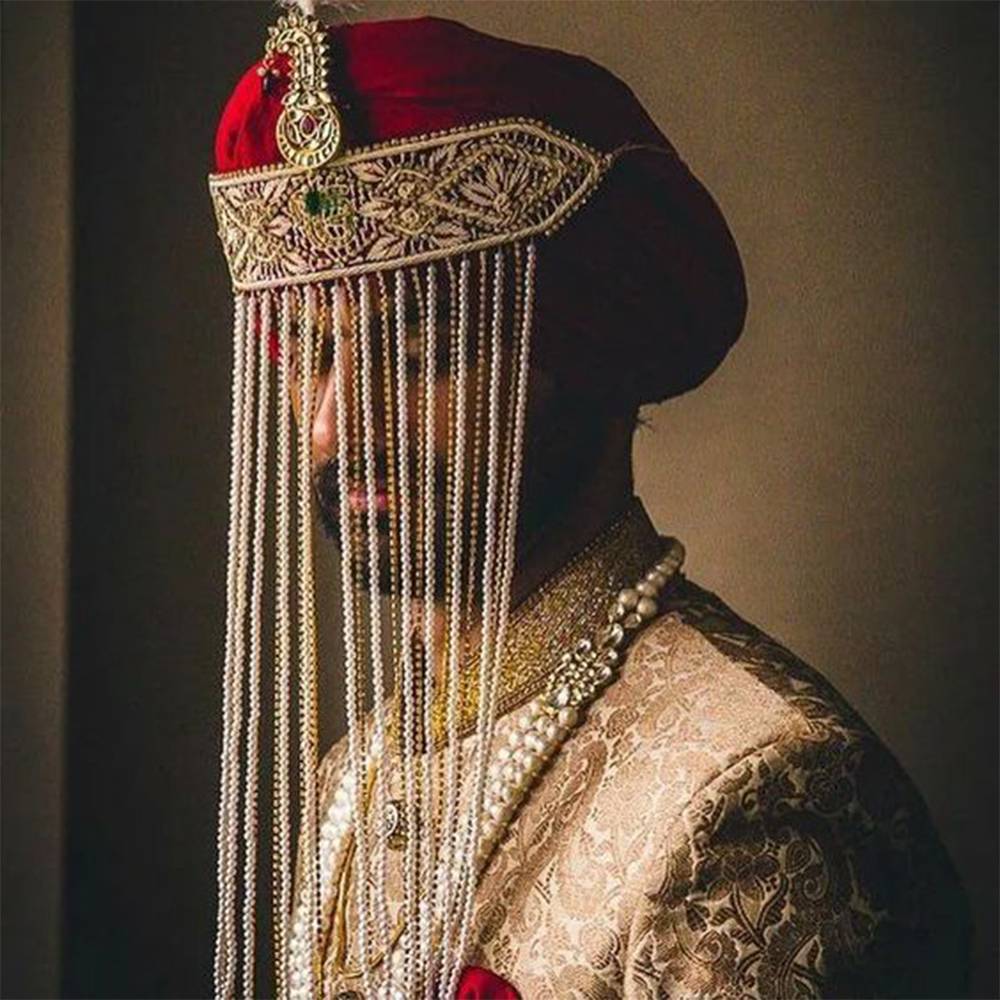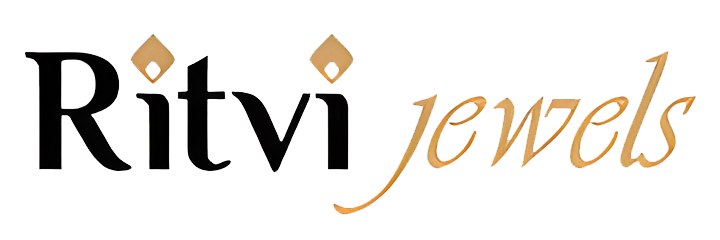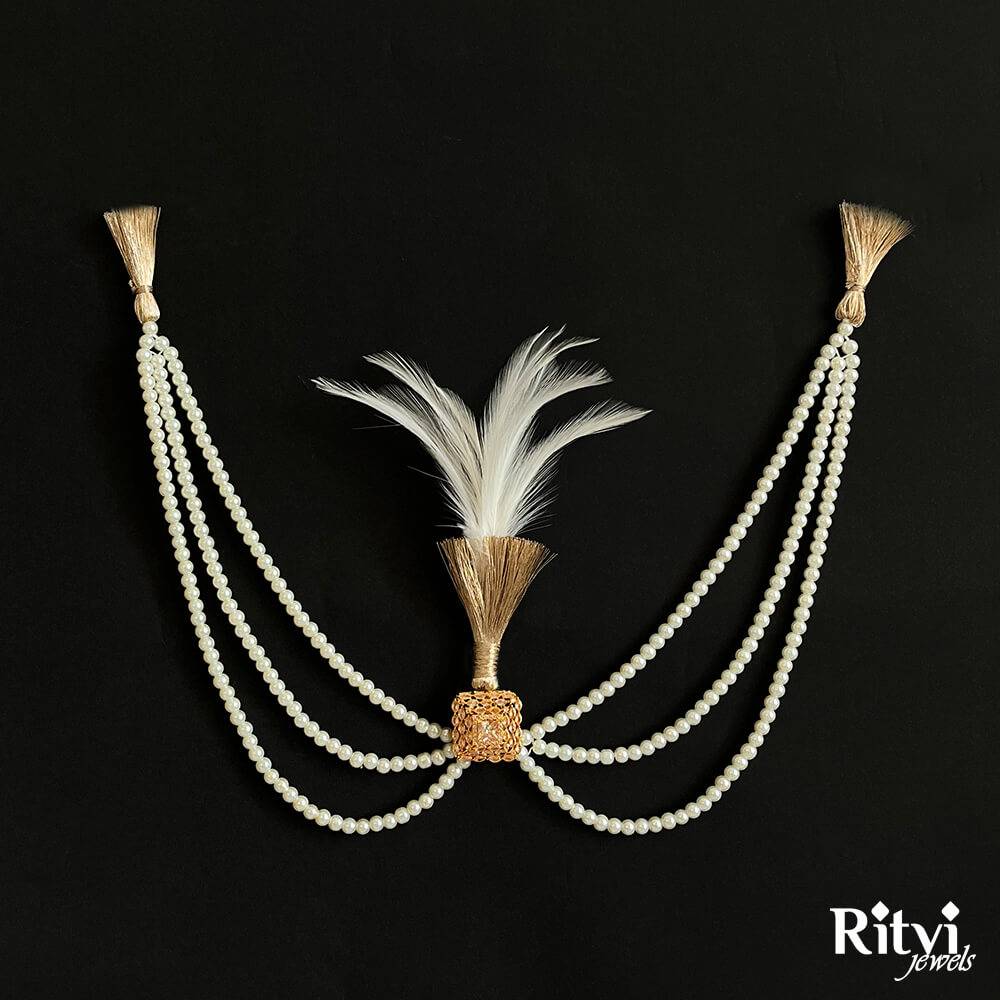The Complete Guide to Sehra: A Symbol of Grace and Tradition in Indian Weddings

In the rich tapestry of Indian wedding traditions, each accessory, symbol, and ceremony carries deep cultural and religious significance. Among these, the Sehra, a veil-like ornament worn by grooms, stands as an integral piece of the wedding attire. Whether adorned with flowers, pearls, or beads, the Sehra adds a layer of mystique, royalty, and tradition to the groom’s look. This comprehensive guide will take you through the history, symbolism, styles, and modern adaptations of Sehra, helping you understand its importance in Indian culture.

What is a Sehra?
The Sehra is a decorative veil worn by the groom during an Indian wedding ceremony. Traditionally, it is fastened to the groom’s Pagdi or turban and drapes down over the face. The Shehra serves multiple purposes: it adds an aura of mystery to the groom’s appearance, acts as a protective charm, and symbolizes the groom’s transition into a new phase of life.
Shehra designs can vary significantly, ranging from simple strings of flowers to elaborate beaded veils with embedded pearls, crystals, or precious stones. While it was once a mark of royal status, today the Shehra is a common part of wedding attire for grooms from various walks of life, especially in North Indian weddings.
Historical Significance of Sehra
The tradition of wearing a Sehra dates back centuries and has its roots in royal and aristocratic families. In ancient times, kings and princes would wear a Sehra to symbolize their status, power, and readiness to lead. The covering of the face was also a sign of humility and modesty, qualities that were considered essential for any ruler.
In addition to its royal associations, the Sehra has spiritual significance. It is often viewed as a protective barrier that shields the groom from the “evil eye” or negative energy during the wedding rituals. Many Indian communities believe that the Sehra helps the groom transition into married life by symbolically protecting him from bad luck and any harm that might befall him on his special day.
Materials Used to Make Shehra
The materials used in crafting Shehra vary widely, and each material carries its own set of symbolic meanings. Here are some of the most common materials used in modern-day Sehra designs:
- Flowers: Flowers like marigolds and jasmine are often used in traditional Sehra designs, especially in rural and semi-rural areas. These flowers signify purity, beauty, and auspiciousness.
- Pearls: Pearls have long been associated with wealth and luxury, making them a popular choice for grooms who want a regal look. Pearls also symbolize wisdom and grace, key qualities for a groom.
- Crystals and Beads: Crystals and beads can be woven into the Sehra to add a shimmering effect. They are often chosen for their aesthetic appeal and their connection to positive energy and protection.
- Gold and Silver Threads: Some Sehra designs feature intricate embroidery with gold and silver threads, lending a touch of opulence to the accessory.
- Kundan and Polki Work: Popular in traditional Indian jewellery, Kundan and Polki designs are also incorporated into Sehra. These elements add a timeless, antique look to the groom’s attire.
- Feathers: In some communities, peacock feathers or other symbolic feathers are added to the Shehra to represent grace, beauty, and divine protection.
The materials you choose for your Sehra can depend on personal taste, cultural significance, and the overall theme of your wedding attire.
Types of Sehra for Different Occasions
While Sehra is most commonly associated with weddings, it can also be worn for other ceremonial occasions. Here are some of the most popular types of Sehra based on different events:
- Wedding Sehra: This is the most elaborate type, designed to make a statement. It often features pearls, gemstones, and embroidery to complement the groom’s formal attire.
- Reception Sehra: While it’s not always customary to wear a Sehra at the reception, some grooms choose a lighter, more minimalist version that is easier to wear during post-wedding celebrations.
- Engagement or Pre-Wedding Sehra: For pre-wedding ceremonies like the Sangeet or Mehendi, a more understated Shehra made from simple beads or flowers can be worn.
- Royal or Heritage Sehra: Some families possess heirloom Sehra, passed down through generations. These Sehra are often made from rare materials and feature intricate craftsmanship that highlights the family’s heritage.
Whether you’re choosing a Shehra for a grand wedding or a smaller pre-wedding event, it should match the occasion and complement your outfit accordingly.
Modern-Day Sehra Designs
Over the years, Sehra designs have evolved to reflect modern tastes and styles while staying true to their traditional roots. Let’s explore some contemporary Sehra designs that have gained popularity in recent years:
- Minimalist Sehra: For the groom who prefers a subtle and sophisticated look, minimalist Sehra designs feature fewer embellishments and simpler materials like pearls or lightweight crystals. These are perfect for modern weddings where understated elegance is key.
- Customized Sehra: Personalized Sehra designs, incorporating elements like the couple’s initials or a family crest, are becoming more popular. These custom creations are often designed to be one-of-a-kind and reflect the couple’s style or story.
- Floral Sehra: Fresh flower Sehra is particularly popular for outdoor weddings or daytime ceremonies. Grooms can opt for seasonal blooms to match their bride’s bouquet or the overall wedding theme.
- Vintage-Inspired Sehra: Some modern grooms are choosing Shehra that harks back to ancient designs, featuring vintage elements like Polki work, Kundan, or antique beads. These designs provide a sense of tradition with a touch of nostalgia.
- Fusion Sehra: Grooms who want to blend different cultural elements may choose a fusion Sehra that combines traditional Indian motifs with Western or modern influences. For instance, a Sehra made from sleek metallic beads paired with a modern suit.
With modern grooms becoming more fashion-conscious, there is no shortage of creative Sehra designs to suit any wedding theme or personal taste.
The symbolism of Sehra in Indian Weddings
The Sehra carries deep symbolism in Indian weddings. It is more than just an accessory — it embodies multiple cultural meanings and plays a pivotal role in the marriage rites:
- Protection: As mentioned earlier, the Sehra is believed to shield the groom from evil spirits and the “evil eye” (referred to as “Nazar” in many cultures). Its protective function is akin to the Sehra Bandi ceremony, where the Sehra is tied on the groom’s head by elders, blessing him for a successful and prosperous married life.
- Modesty: The Sehra, by covering the groom’s face, represents modesty and humility as he approaches his bride. In many communities, the act of unveiling the Sehra at the end of the wedding ceremony is seen as symbolic of the groom revealing his true self to his partner.
- Royalty and Status: The grandeur of the Sehra signifies the groom’s regal bearing and highlights his status within the community. In ancient times, only royal families wore Sehra, and today it still carries connotations of nobility.
The Sehra, therefore, holds not just aesthetic value but also deep spiritual and cultural meaning, making it an indispensable part of the groom’s wedding attire.
How to Choose the Perfect Sehra for Your Wedding
Choosing the right Sehra can be a bit overwhelming, given the wide array of designs and styles available. Here are some tips to help you find the perfect one for your special day:
a) Consider Your Wedding Theme
The Sehra should complement the overall theme of your wedding. If your wedding has a traditional or royal theme, opt for a heavily embellished Sehra with intricate designs. For modern or minimalist themes, a simpler, more contemporary Sehra will work best.
b) Match with Your Outfit
Your Sehra should harmonize with your wedding attire. If you’re wearing a heavily embroidered Sherwani, a more understated Sehra might provide balance. Conversely, a simple Sherwani can be paired with an ornate Sehra to make a bold statement.
c) Choose the Right Materials
Select materials that align with your personal preferences and the formality of the occasion. If you’re looking for a luxurious feel, opt for pearls, gold thread, or crystals. For a more traditional look, a flower-based Sehra or one adorned with beads might be a better choice.
d) Comfort Matters
A Sehra is typically worn for several hours during the wedding, so it’s important to choose a comfortable design. Lightweight materials like flowers or smaller beads can make it easier to wear throughout the ceremony without feeling too heavy.
e) Personalization
If you want to make your Sehra truly special, consider getting it customized. Many jewellers and designers offer personalized options that allow you to incorporate unique elements like initials, family symbols, or specific colours that are meaningful to you.
By keeping these factors in mind, you can select a Sehra that not only enhances your wedding look but also feels comfortable and personal.
Sehra in Different Indian Communities
Though Sehra is most commonly associated with North Indian weddings, it is also a part of wedding traditions in various other Indian communities. Let’s take a look at how Sehra is interpreted across different regions and cultures:
a) Punjabi Weddings
In Punjabi weddings, the Sehra, often made of flowers or pearls, is a significant part of the groom’s attire. The Sehra Bandi ceremony, where the Shehra is tied to the groom’s turban by his sisters or female relatives, is a special moment that signifies blessings for a prosperous future.
b) Gujarati Weddings
In Gujarati weddings, the Sehra is typically more ornate and features a combination of beads, flowers, and sometimes feathers. The groom often wears a Bandhani turban with the Shehra, adding to the grandeur of his look.
c) Rajasthani Weddings
Rajasthani grooms wear a Sehra made from flowers, especially marigolds, or sometimes with metallic beads. In this tradition, the Sehra is viewed not only as a protective charm but also as a sign of the groom’s royal lineage and heritage.
d) Muslim Weddings
In Muslim weddings, the Sehra is a key element of the groom’s attire. It is often made from delicate flowers or beads and is tied to a turban or topi (cap). The Sehra symbolizes modesty and humility as the groom approaches his bride for the Nikah ceremony.
The way Sehra is worn and the materials used can vary significantly across communities, but it’s core significance as a symbol of protection, modesty, and blessings remains universal.
Cultural and Regional Variations of Sehra
The Sehra, much like other elements of Indian wedding attire, varies significantly based on region and culture. Here’s how it differs in various parts of India:
a) Northern India
In Northern India, especially in states like Uttar Pradesh and Haryana, the Sehra is traditionally made from flowers or pearls. It’s an essential part of the groom’s attire, and the Sehra Bandi ceremony is a major ritual where the Shehra is fastened to the groom’s head by family members.
b) Western India
In Western states like Gujarat and Rajasthan, Sehra designs are often more elaborate, featuring vibrant colours and intricate beadwork. In Rajasthan, the Shehra is sometimes adorned with peacock feathers, symbolizing beauty and prosperity.
c) Southern India
While the Sehra is less common in Southern Indian weddings, it is still used in certain communities. In Tamil and Telugu weddings, grooms may wear a simpler Sehra made from flowers to accompany their traditional Dhoti or Sherwani.
These regional differences highlight the cultural diversity of India, but they all share a common reverence for the Shehra as a symbol of marital blessings and protection.
How to Wear and Maintain Your Sehra
Wearing a Sehra is relatively simple, but proper technique and care are important to ensure it stays in place and looks perfect throughout the ceremony. Here’s how to wear and maintain your Sehra:
a) How to Wear a Shehra
- Attach to the Pagdi: Most Sehra comes with pins or clips that make it easy to fasten onto the groom’s Pagdi or turban. Ensure that it is securely attached to avoid any mishaps during the ceremony.
- Adjust the Length: The Sehra should drape down over the face but not too far so that it obstructs your vision. Adjust the length accordingly for comfort and style.
- Secure with Hair Pins: If needed, use additional hairpins to secure the Sehra in place, particularly if the wedding involves a lot of movement, such as during the Baraat (groom’s procession).
b) How to Maintain Your Sehra
- Storage: Store your Sehra in a jewellery box or cloth bag to protect it from dust, moisture, and damage.
- Cleaning: If your Sehra is made of flowers, there’s not much maintenance required since it’s typically worn for a few hours. However, for Sehra made from pearls, beads, or crystals, gently wipe them with a soft cloth to remove any dirt or sweat.
- Repairs: If your Sehra becomes damaged, take it to a professional jeweller or designer who specializes in traditional Indian wedding accessories for repairs.
By following these tips, you can ensure that your Sehra looks flawless on your special day and remains in good condition as a keepsake or family heirloom.
Where to Buy Shehra Online
Today, there are numerous online platforms where you can find a wide variety of Sehra designs to suit any taste or budget. Here are some top places to shop for Sehra online:
- CaratLane: Known for its exquisite jewellery and accessories, CaratLane offers a range of Shehra designs that blend tradition with modern aesthetics.
- Amazon India: For budget-friendly options, Amazon India has a broad selection of Sehra made from various materials, including flowers, beads, and pearls.
- Wedding Boutiques: Many online wedding boutiques specialize in traditional Indian accessories, including Sehra. Websites like Utsav Fashion and Indian Wedding Saree offer custom-designed Shehra tailored to your specific needs.
Before purchasing, make sure to read reviews, inquire about materials, and verify the return or exchange policy to ensure you’re getting the best quality for your money.
Conclusion
The Sehra is an iconic and meaningful part of Indian wedding traditions, symbolizing protection, modesty, and regal elegance. Whether you choose a minimalist design or an elaborate one, your Sehra plays a crucial role in completing your wedding attire and carrying forward age-old customs.
From its historical roots in royalty to its modern-day interpretations, the Sehra remains a cherished accessory for grooms, offering a blend of tradition, personal expression, and cultural pride. With countless designs, materials, and styles to choose from, you can find the perfect Sehra to suit your unique style and make your wedding day truly unforgettable.
FAQs
What is a Sehra, and why is it worn in Indian weddings?
A Sehra is a decorative veil traditionally worn by Indian grooms during their wedding ceremonies. It symbolizes modesty, protection from the “evil eye,” and a transition into married life while adding an aura of elegance and tradition.
What materials are commonly used in making a Sehra?
Sehra designs often feature materials like flowers (jasmine, marigolds), pearls, crystals, gold or silver threads, Kundan and Polki work, and even feathers like peacock feathers for added symbolism and style.
Can I buy a Sehra online?
Yes, you can purchase a Sehra online from platforms like Amazon India, Utsav Fashion, and CaratLane. These platforms offer a range of designs, from traditional flower-based Sehra to modern, embellished options with pearls and crystals.
How do I choose the perfect Sehra for my wedding?
Consider factors like your wedding theme, attire, personal preferences, and comfort. Match the Sehra’s design with your Sherwani or turban and opt for materials that align with your style and the ceremony’s formality.
Are Sehra designs customizable?
Yes, many designers and jewellers offer personalized Sehra options. You can incorporate elements like your initials, family symbols, or specific color themes to create a unique and meaningful accessory.
What types of Sehra are available for different occasions?
Wedding Sehra: Elaborate and heavily adorned.
Reception Sehra: Minimalist and lightweight.
Pre-Wedding Sehra: Simple designs for ceremonies like Sangeet or Mehendi.
Heritage Sehra: Family heirloom pieces with intricate craftsmanship.How much does a Sehra typically cost?
The price of a Sehra varies based on materials and design complexity. Simple flower-based Sehra can cost as little as ₹500, while ornate designs with pearls and gold threads may range from ₹2,000 to ₹5,000 or more.
Are there lightweight Sehra options for comfort?
Yes, lightweight Sehra made with flowers, small beads, or minimalist crystal designs are available. These are ideal for grooms who want a comfortable yet elegant look.
What is the significance of the Sehra Bandi ceremony?
The Sehra Bandi ceremony involves tying the Sehra onto the groom’s head, often performed by elder family members. It is a symbolic act that bestows blessings and protects the groom from negative energy during the wedding.
Can I reuse or preserve my Sehra after the wedding?
Yes, non-floral Sehra made from pearls, crystals, or gold threads can be preserved as keepsakes. Store them in a jewellery box or cloth bag to protect them from dust and moisture, and gently clean them when needed.



